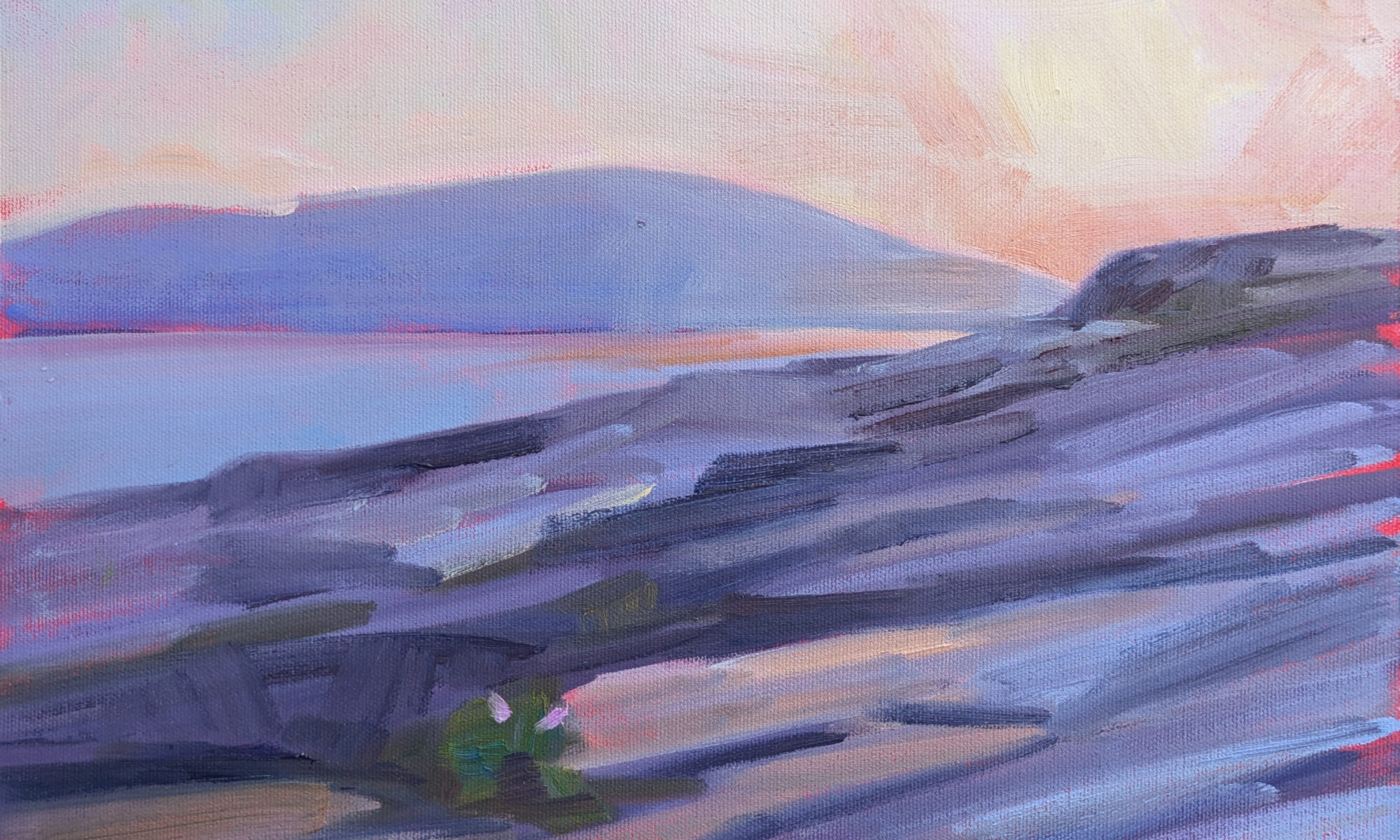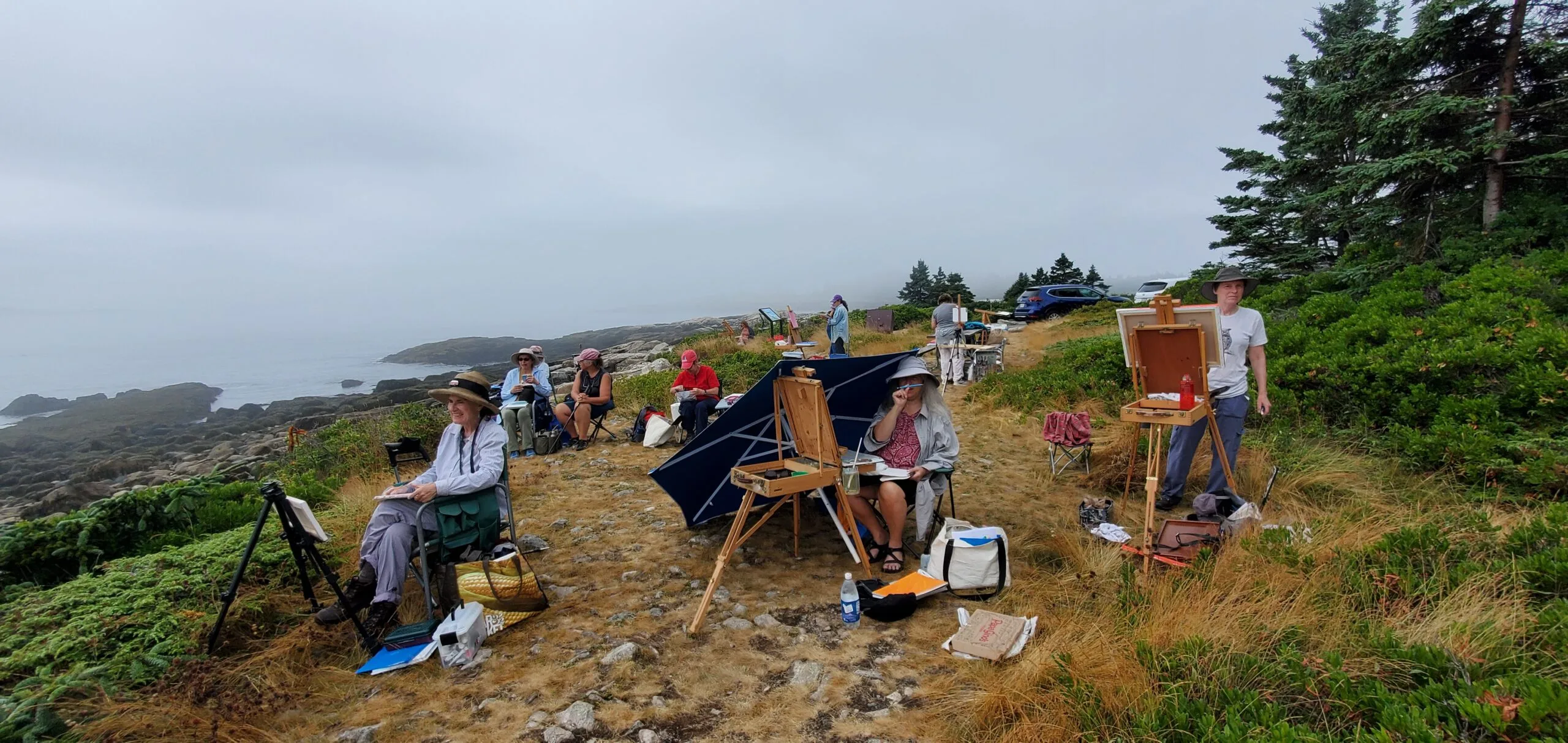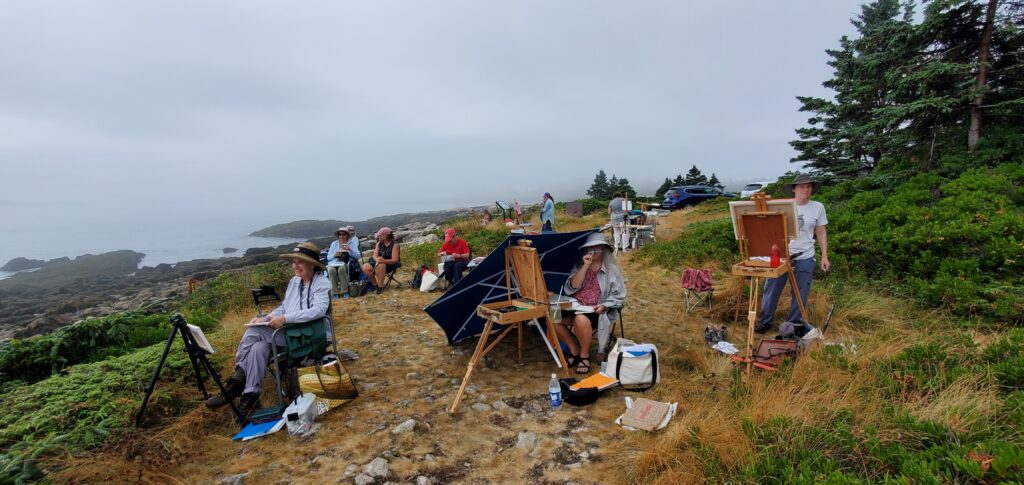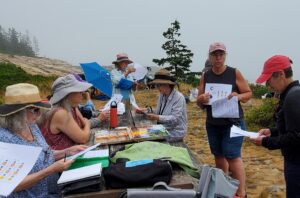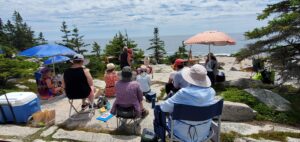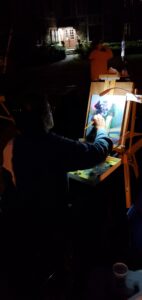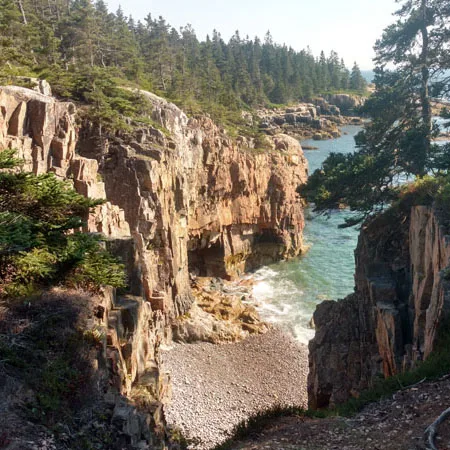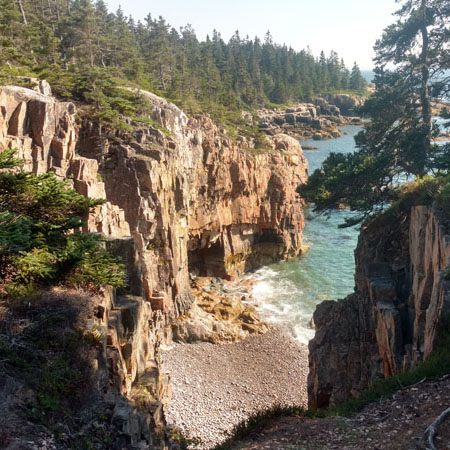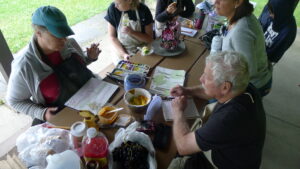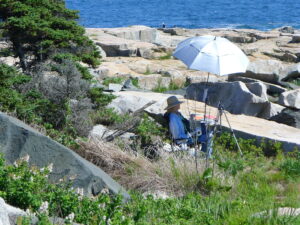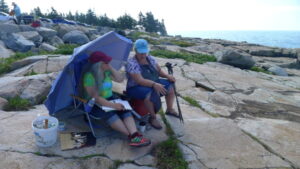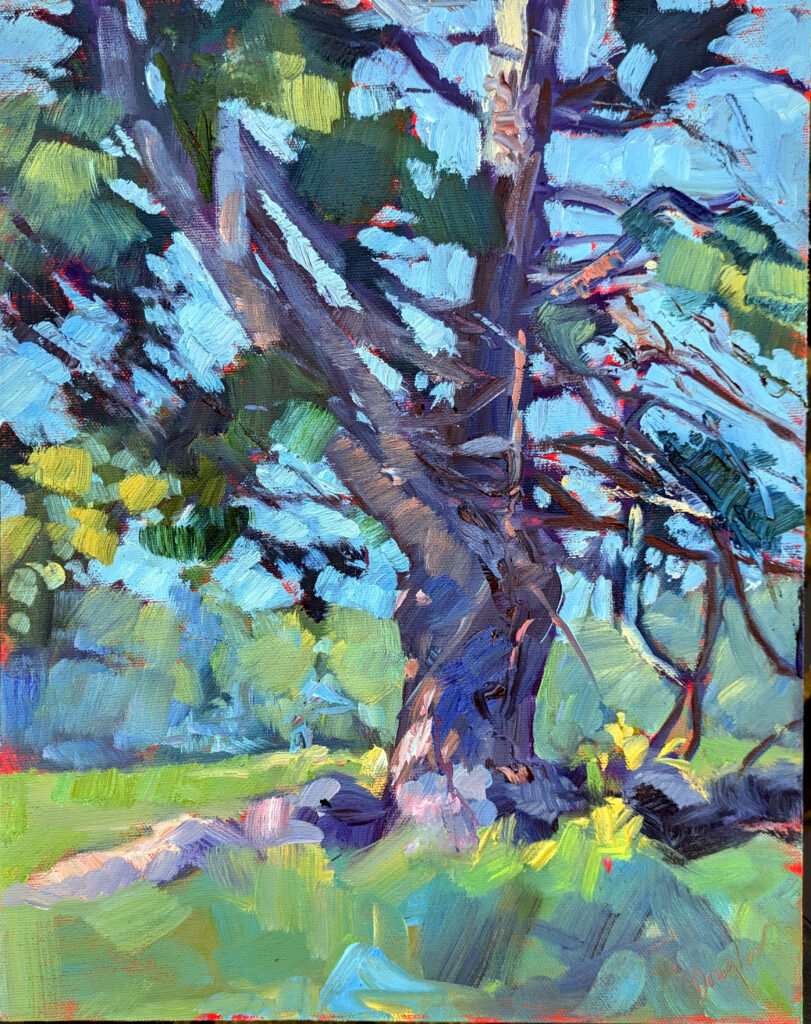
In past years, painting with Ken DeWaard, Eric Jacobsen and Björn Runquist wouldn’t have been worth a mention. This year I didn’t manage it until last Thursday. My summer has been terribly overbooked, something I’ve been complaining about for decades. That’s a pity when one lives in the northeast, where summer and fall are the best seasons.
I recently suggested to my daughter that we make a pact to not work more than 45 hours a week on non-family things. “I can’t possibly!” she responded. She’s a third-generation over-scheduler; my mother was the same way. When I was 35, my mother tried to get me to stop it, with about the same success. At 65 I begin to see what she was talking about. You don’t do anything well if you’re trying to do everything.
Having unsuccessfully laid down the gauntlet to my daughter, I spent the Labor Day weekend wrestling with myself about where I’ll cut down.
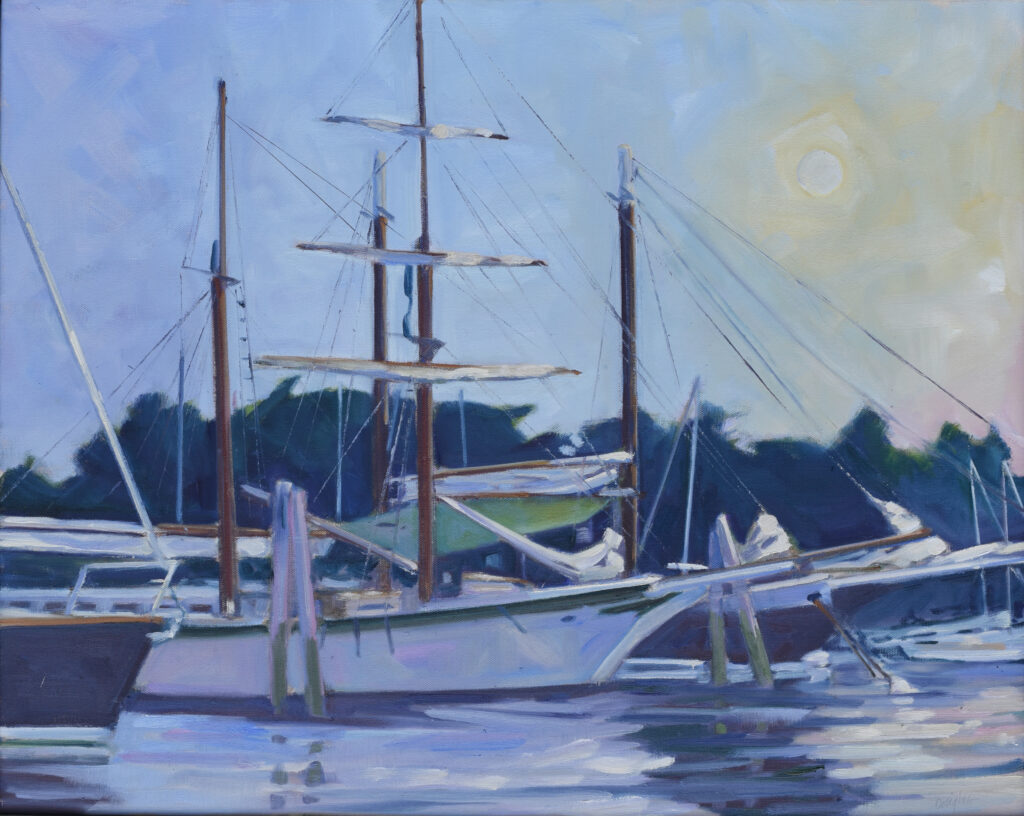
What good is a teacher who doesn’t paint?
I sometimes feel as if I’m potting along in a Chevy Aveo while my friends pass me left and right in their Corvettes. I love teaching and I’m good at it. But that makes it too easy to sacrifice painting for teaching time. Painting should be constant revelation, change and discovery, and you can’t do that without a brush in your hand.
This, of course, is nobody’s fault but my own.
As I always tell my students, painting in the studio is good, but painting outdoors in natural light is the best possible training for an artist. In Maine, summer and fall are the best seasons, but, dang, they’re short!
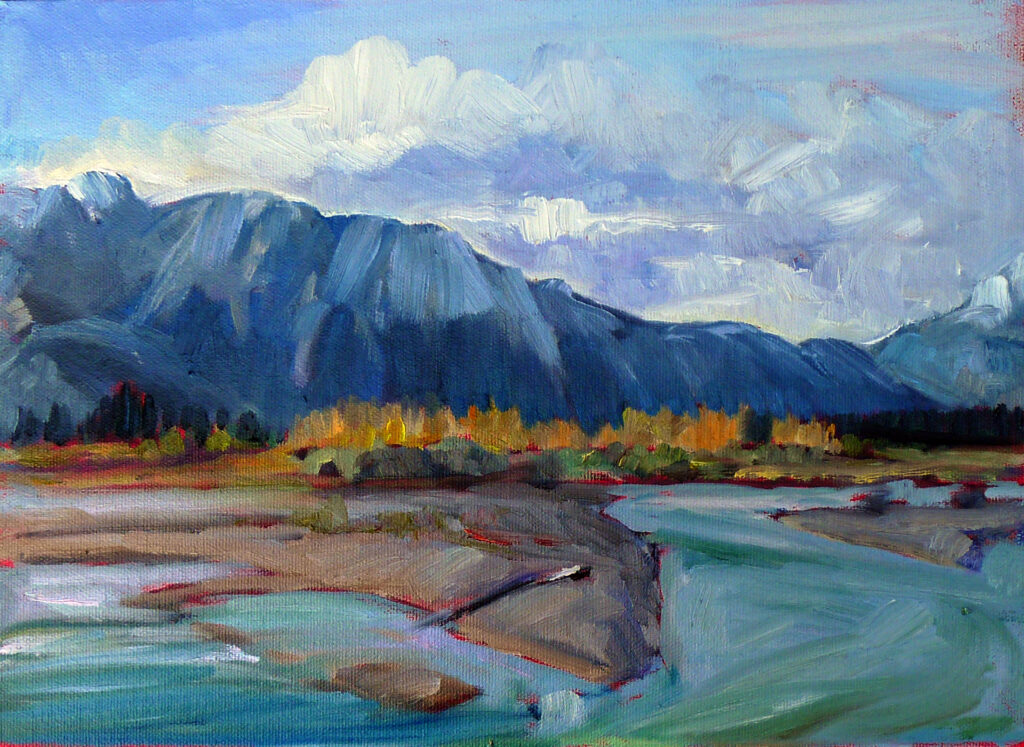
I’m limiting my 2025 workshops.
I’m only going to teach four workshops in 2025, and none of them will involve flying.
Advanced Plein Air Painting (Rockport, ME), July 7-11, 2025
This is an opportunity for more advanced painters to work on the complex concepts in painting, like directing the viewer’s eye, narrative flow, serious drawing, etc. If you’ve already studied with me, email me to ask if you should take this workshop. If not, send me some sample work as per the course description.
That’s the only workshop that’s only for advanced painters. The rest are open to students of all levels (and I like a mixture of experience; it makes it livelier for everyone).
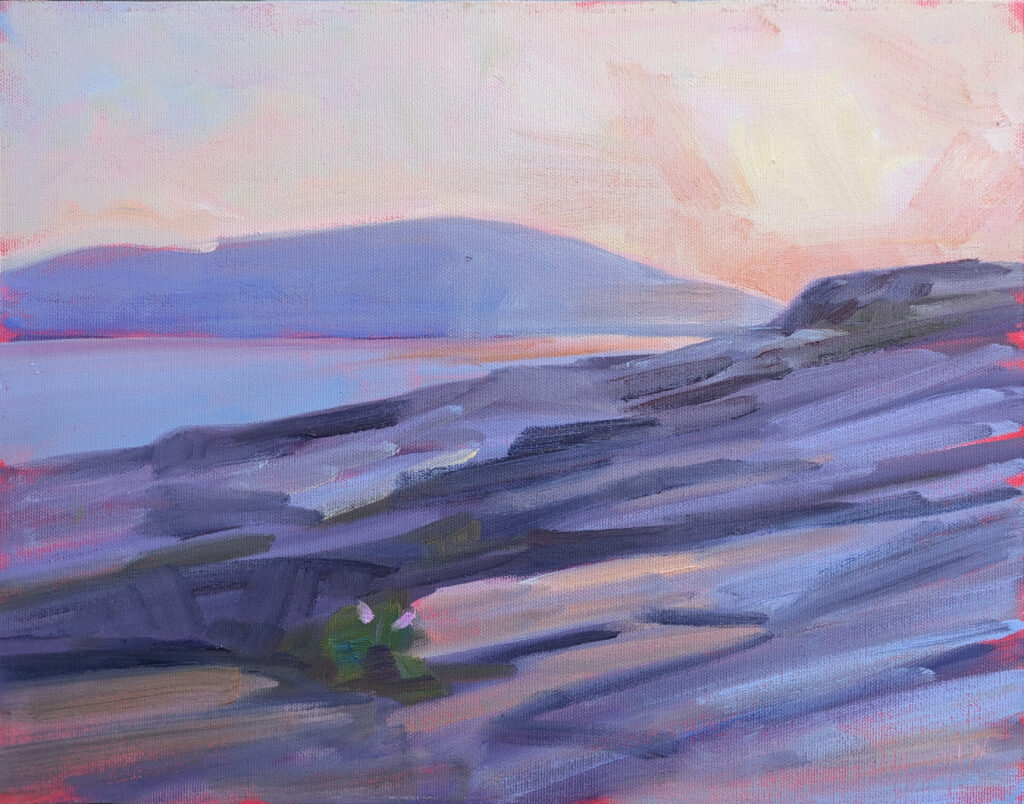
Sea and Sky at Acadia National Park, August 3-8, 2025
This is an opportunity to spend time at America’s first national park. I’d encourage you to live in if possible; it becomes a bonding and immersive experience. However, I always have commuters and they seem to benefit as well. I’ve been teaching this workshop longer than any other, because it’s a personal favorite.
Find Your Authentic Voice in Plein Air, Berkshires, August 11-15, 2025
This is centered in historic Lenox, MA. I chose this location because it’s in easy driving distance of NYC (3 hours) and Boston (2.5 hours). The Berkshires are relaxed, agricultural, historic and scenic. Plus, you can get good cider doughnuts. It’s the only workshop I teach where I also have been known to go shopping.
Immersive In-Person Fall Workshop, Rockport ME, October 6-10, 2025.
This is the height of fall color, for which of course New England is famous. Add the tang of the ocean and the peculiar reds of blueberry barrens and it’s downright otherworldly. I throw in a few curveballs, like a model in the landscape and a visit to the Farnsworth Art Museum in Rockland.
(By the way, if you want to do this in 2024, I still have a few openings.)
What does that mean for you?
It means that only 59 people will have the opportunity to study with me in person in 2025. (I’ll still be teaching on Zoom, of course.) I’ll be promoting these workshops all fall, but if you know you want to take one, you might as well register and make your deposit now.
Reserve your spot now for a workshop in 2025:
- Advanced Plein Air Painting, Rockport, ME, July 7-11, 2025.
- Sea and Sky at Acadia National Park, August 3-8, 2025.
- Find Your Authentic Voice in Plein Air, Berkshires, MA, August 11-15, 2025.
- Immersive In-Person Fall Workshop, Rockport, ME, October 6-10, 2025.

